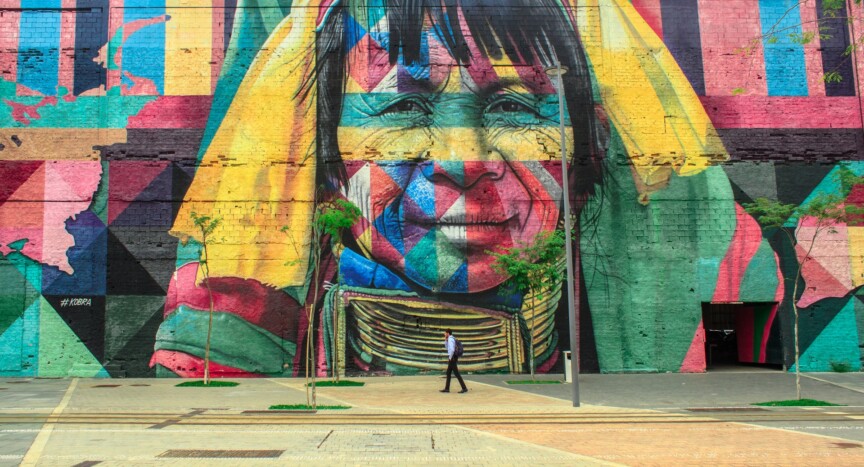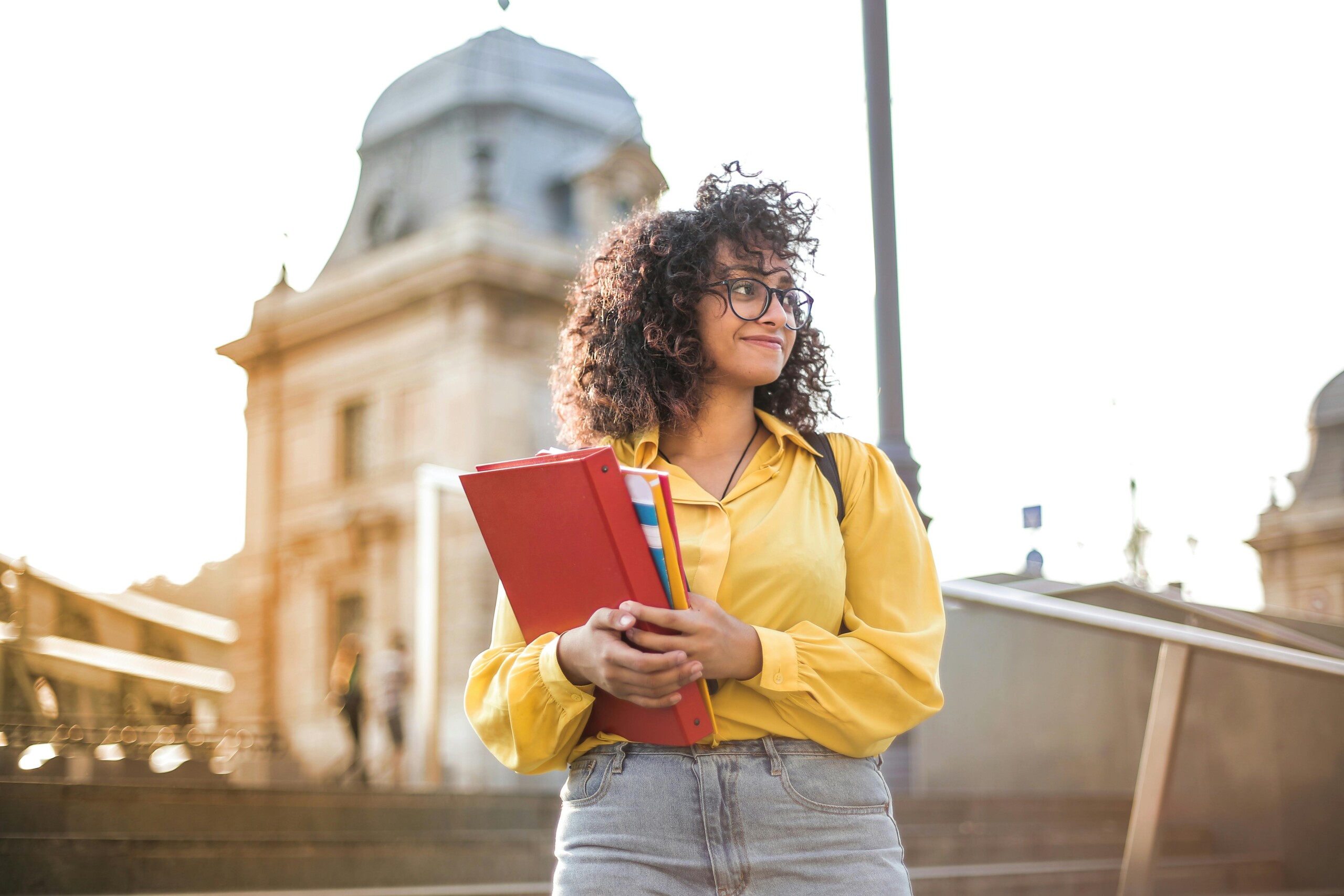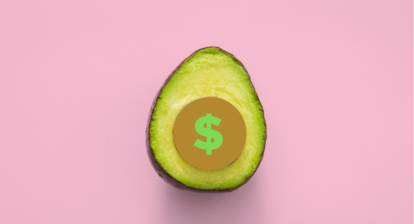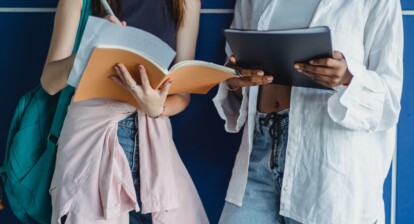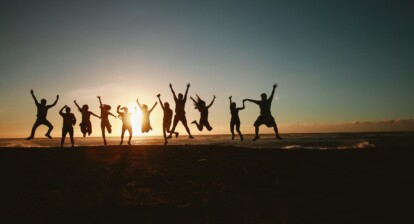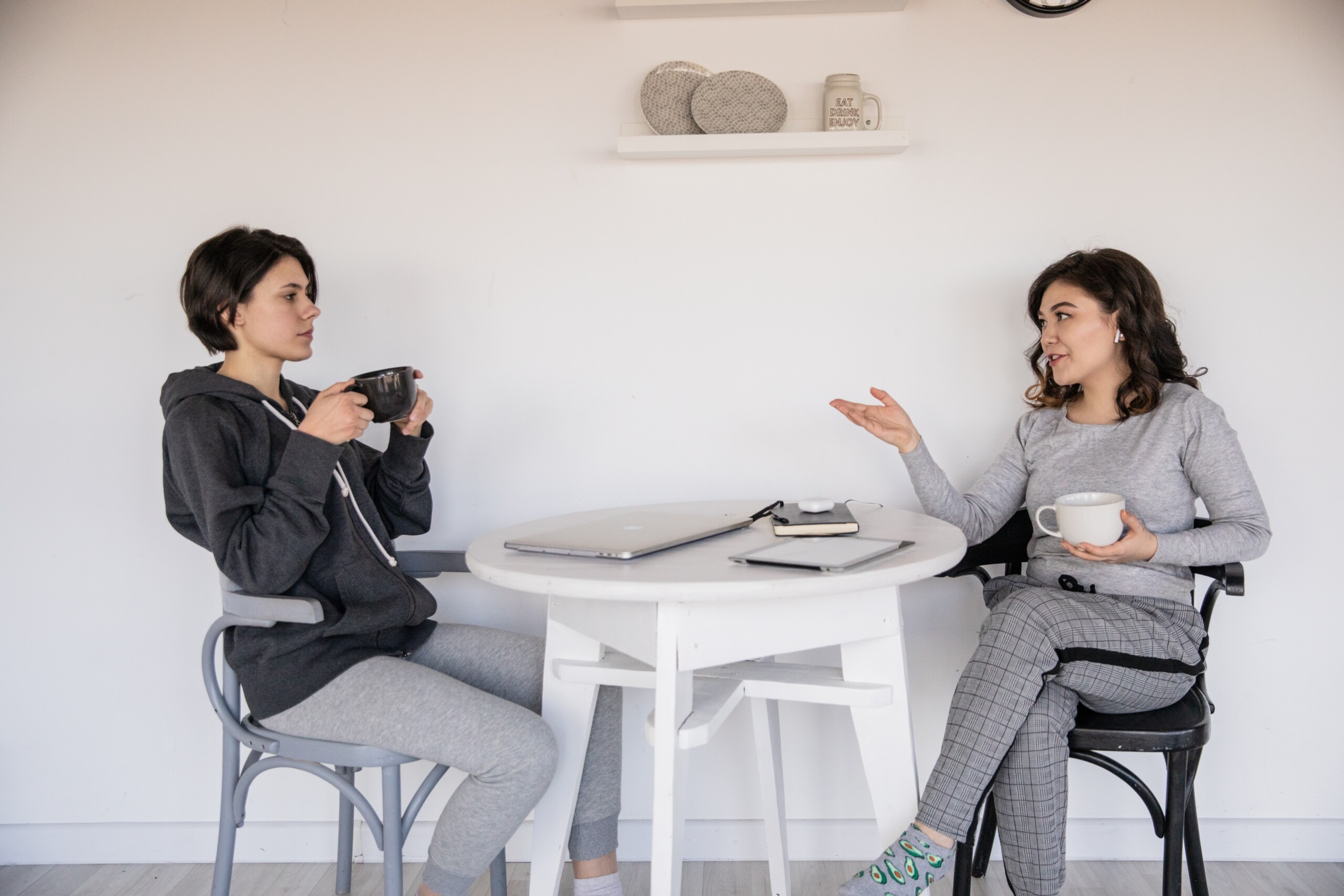Walking around Tilburg, there is a neighborhood called Stokhasselt-Noord, a place that is home to many immigrants in the Netherlands. This neighborhood is not considered to be very nice in comparison to other neighborhoods in Tilburg. Most people would say this is not a place with nice surroundings or a neighborhood where someone in their spare time will go take a walk. How can a place like Stokhasselt become a neighborhood where the residents feel proud to live? How can this place be transformed into an area where people enjoy walking? Well, this could be achieved through the power of public art, more specifically the creation of a community mural. The most meaningful insight these murals will bring to the neighborhood will be making people feel represented, to create strong ties and a sense of belonging.
More than just Painted walls
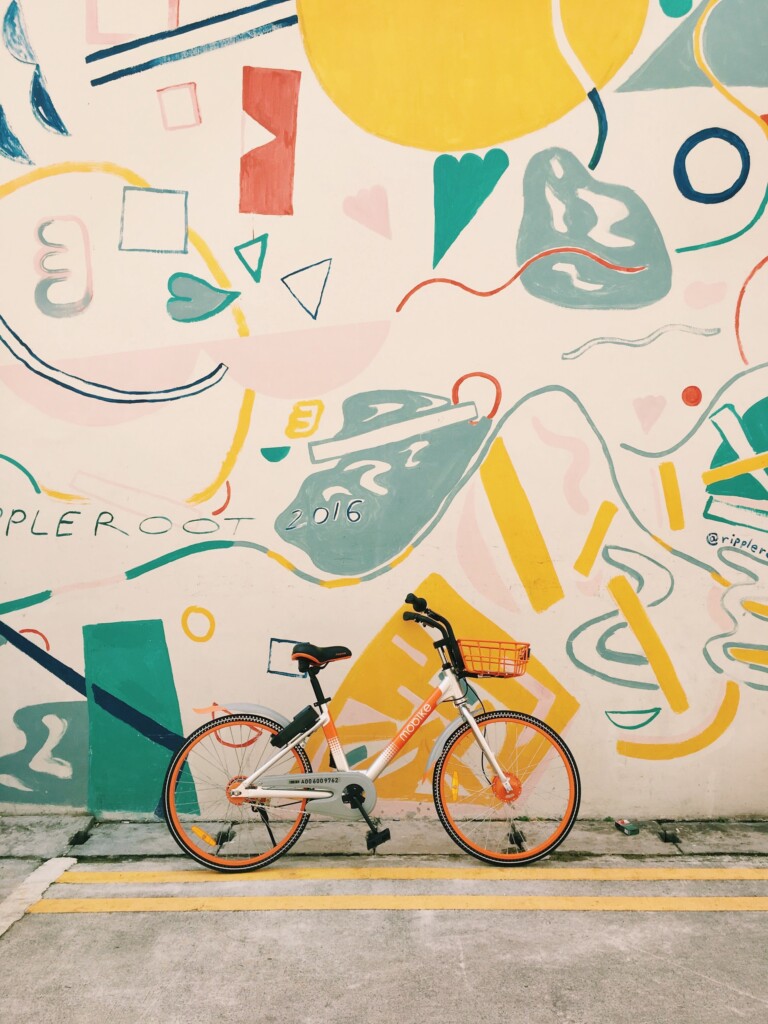
You may wonder what a community mural is? In simple terms, a community mural is a form of public art and no, it is not a graffiti wall, the difference is that “murals usually involve more coordination and planning, are more collaborative, and engage multiple members of the community” [1]. It should be noted that public arts can “promote people’s happiness and improve their mental and physical health through community building and social connectedness” [2]. Furthermore, the creation of these murals will have an impact on the well-being of the residents of Stokhasselt-Noord because of the wide range of benefits such as bringing individuals from different backgrounds together, this could be people who lived two blocks away from each other but never had the chance to interact, or fueling residents creativity and beautifying the areas where there is trash all over and empty dirty walls covered with random unmeaningful tags (vandalism). The accessibility to the public will grant the unique opportunity to residents and visitors to the neighborhood to feel contented, healthy, and safe.
These murals will have an impact far beyond the ‘real world’, as they will likely attract attention in social media. Whether it is people taking selfies in front of them, or visitors that first saw these murals on social media – while the art is defined by its location, everyone with an internet connection can enjoy it.
“The creation of these murals will also build relationships that will last after the paint has dried”
A committee formed by community members will be in charge of the planning of murals who are willing to take the lead in a change for their neighborhood. This committee has the responsibility to plan the steps to be taken, the registration of participants, and in charge of the legal consent with the private parties (owners of the places where the walls are located). The creation of these murals will also build relationships that will last after the paint has dried since this is also what it is aimed to achieve, a community of love and care where people keep coming together even after the mural is finished.
Impact on Residents
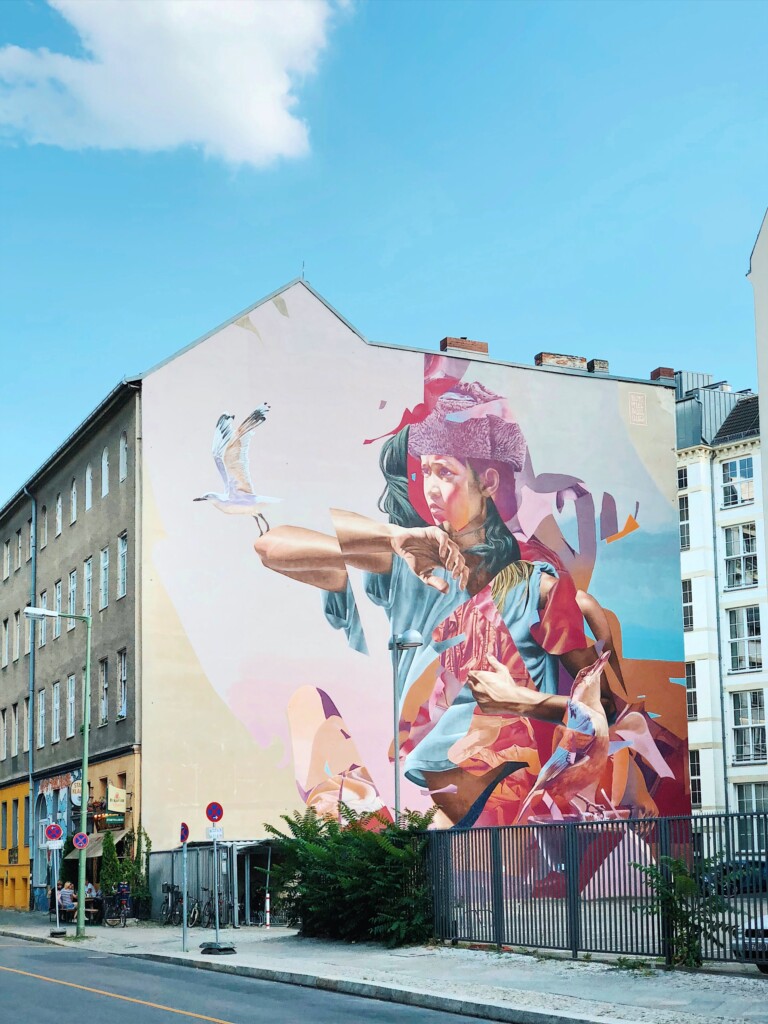
As touched upon earlier, bringing a mural project to Stokhasselt-Noord will have a positive impact on the resident’s well-being. Through the communal art-making process, the bonds formed between the participants may become important foundations of a more stable community. Misconceptions about others may fall to the wayside, biases may be erased, in these occasions’ transformations can occur, social skills can improve, and hopefully life-long friendships can be made.
A community-based mural would also have a great effect on creativity. The children, teens and adults in the neighborhood will perceive this mural as a space for expressing their feelings through art. As more people engage in the creation of this mural, more people will feel that they are also capable of contributing to it. This project can be valuable because it can portray the community as artistic, fun and communicative, giving the neighborhood a new sense of confidence and identity [3].
What’s in it for them?
A question that may have popped up in your mind while reading this post is “What do the people in this neighborhood gain from getting involved in this?” Well, this community-based project can help the residents gain new skills, make connections with their peers through teamwork, and get involved in new opportunities. As a form of this action, art projects can be a powerful means to inform and catalyze community organizing and revitalisation [4].
“ This public art can create a collective “we” through shared messages and the positive association of being productive in a public place”
To celebrate the wide range of diversity in the neighborhood, working on this mural may allow them to form a collective identity. They can help to characterize the values and common interests in the community in a way other forms of communication cannot do; they are a great equalizer. “It is the mural itself that calls attention to its character and function” [5]. This public art can create a collective “we” through shared messages and positive connotations of being productive in a public place. From this collective “we”, the residents can form a common bond with each other about the area and the mural itself. Also, the mural may bring out many forms of empowerment. A study focusing on the impacts of participatory mural making on youth employment found that 74% of students either agreed or strongly agreed that creating the mural was a “positive experience” for them. This empowerment may come out in different forms, from building relationships to a high level of responsibility and accountability [6].
To Conclude
Overall, despite all the stress that may come from organizing, preparing and creating the mural at hand, this art project would be a beautiful way to display the wide range of diversity and sense of community in Stokhasselt-Noord. Through the bonds that will be created and skills that will be
formed and developed, it can allow the residents to feel a sense of accomplishment and belonging. People may come and go from the neighborhood, but the murals will be there as a reminder for years to come of what can be done when working as a community.
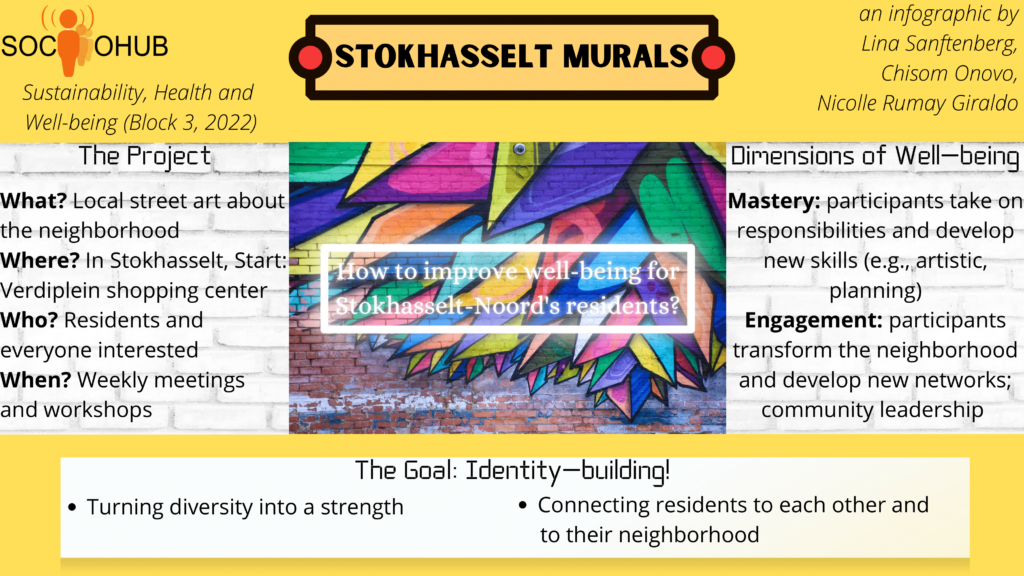
Referenties
[1] Mailer, N., & Naar, J. (2010). The faith of graffiti. Harper Collins.
[2] Cheung, M., Smith, N., & Craven, O. (2021). The Impacts of Public Art on Cities, Places and People’s Lives. The Journal of Arts Management, Law, and Society, 52(1), 37–50. https://doi.org/10.1080/10632921.2021.1942361
[3] Conrad, D. (1995). Community Murals as Democratic Art and Education. Journal of Aesthetic Education, 29(1), 98–102. https://doi.org/10.2307/3333522
[4] Walker, M. A. (2018). The Unity Mural: Bridging Communities through Artmaking. International Journal of Lifelong Learning in Art Education, 1(6). https://doi.org/10.25889/fpdn-hq47
[5] Adams, M. (2020). Understanding Murals Influence on the Community (Doctoral dissertation, Queens University of Charlotte)
[6] Melcher, K., Stiefel, B., & Faurest, K. (2016). Community-Built: Art, Construction, Preservation, and Place. Routledge.

